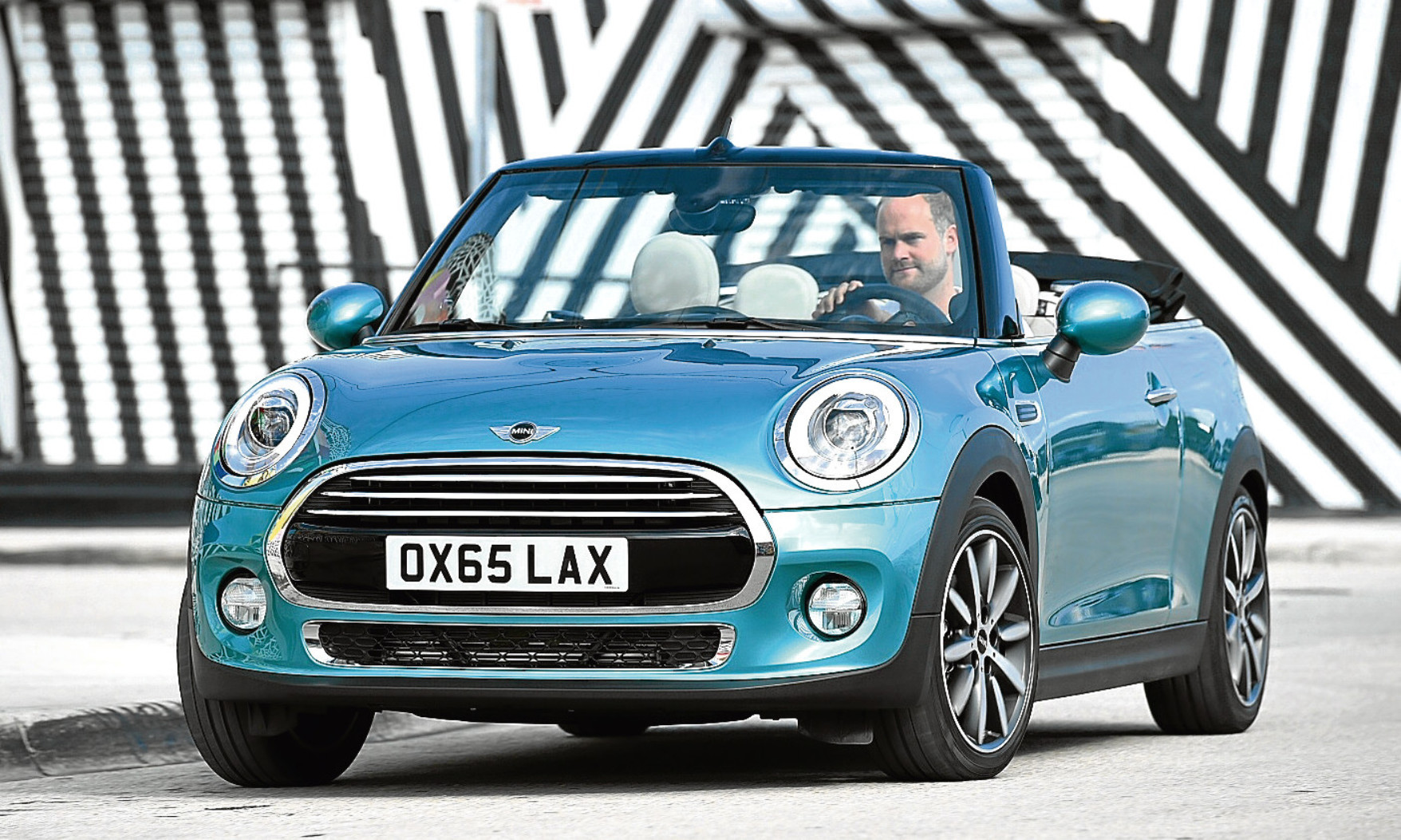It’s pretty hard to take exception to Mini’s third generation Convertible. It brings more space for passengers and luggage, a larger presence on the road and, for the first time, a customisable fabric roof.
The new design retains the unmistakable character of this popular soft top and buyers can pick petrol, diesel and performance versions.
When BMW rebooted the Mini brand in 2001, it took three years to add a convertible to the range. Once on sale, four people could enjoy the open-air adventures Mini promised, although the rear passengers had a tight squeeze getting into the back. Things were improved in 2009’s second generation version.
This third generation convertible model should certainly be more spacious, having grown in every dimension.
The base 136bhp Mini Cooper Convertible will accelerate from 0-62mph in 8.8 seconds and hit 129mph. There’s also a 116bhp Cooper D diesel model and a pokier 192bhp Cooper S petrol model.
At speeds of up to 18mph, the new fabric roof can be lowered or raised in 18 seconds, so when the Scottish weather does what it does, you’ll not be left out in the rain for too long. If you just want to open the small portion over the front seats, it can slide back 40cm, automatically, at any speed. Customers can also specify a woven Union Jack flag on the roof should they so desire – although there’s no Saltire option I’m afraid.
The Convertible body has been reinforced to make it rigid enough to cope with the demands of sporty driving which normally would cause the shell to flex. The speed-sensitive steering is designed to make manoeuvring at low speeds easier, while at higher speeds the car responds less nervously to small amounts of steering.
The third generation Mini Cooper Convertible retains the basic overall body shape that we all know and love, but each of the dimensions are just a little larger. This car is 98mm longer than its predecessor and 44mm wider too, plus there’s 28mm more in the wheelbase. This addresses the main criticisms of the older models in two key areas: the back seats and the boot.
Rear passengers get more legroom, making access the second row easier. When the folded fabric roof is down it forms a wrap-around collar around the back seats, rather than disappearing completely. It encroaches slightly into the boot area but despite this, the luggage capacity has grown by around 25%.
The basic petrol Mini Cooper Convertible starts at around £18,500 for the manual version, the diesel costs from just over £20,000 and the top of the range John Cooper Works model from a little over £28,000.
The standard Cooper Convertible petrol model returns 55.4mpg on the combined cycle. For more impressive economy, the Cooper D Convertible returns 70.6mpg, and as you might expect, the sporty Cooper S Convertible consumes a lot more, returning 46.3mpg.
Good residual values can be expected, especially as this car addresses many of the problems of the old car and should remain a desirable option for many years.
This third generation Mini Convertible looks great, is brilliantly designed, cheap to run and holds its value. It’s even a bit more practical than you might be expecting.
Okay, you could complain about the premium pricing but in truth, there’s not really much more than that to put off would-be Convertible purchasers who need a more involving drive than one of those hairdessers’ cabriolets but don’t want a sports roadster either.
